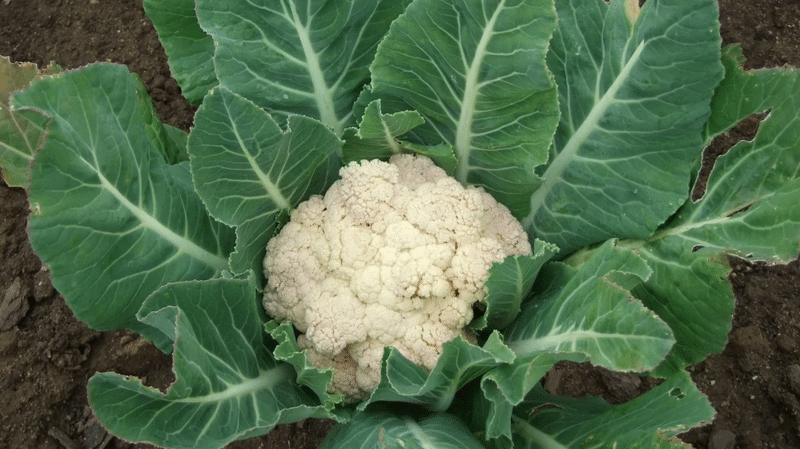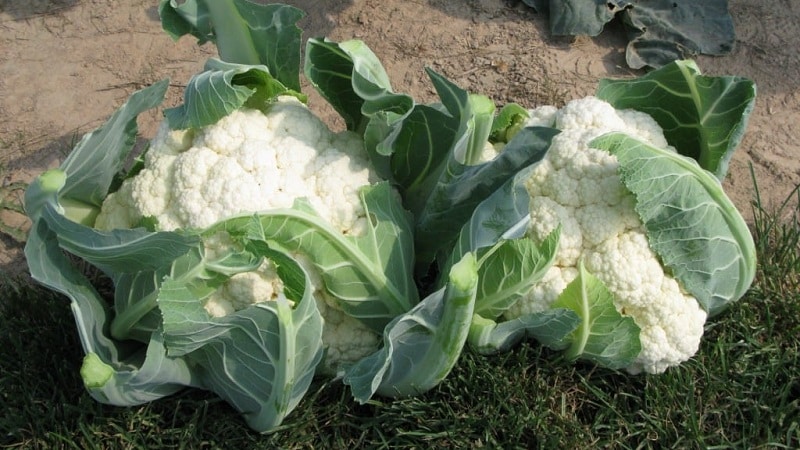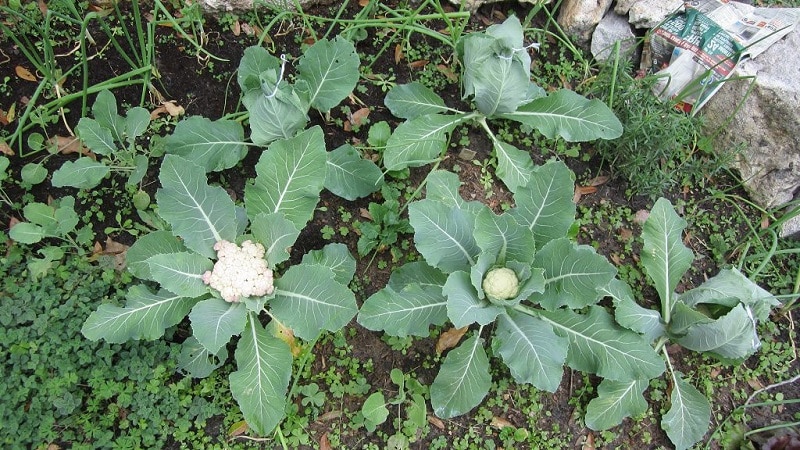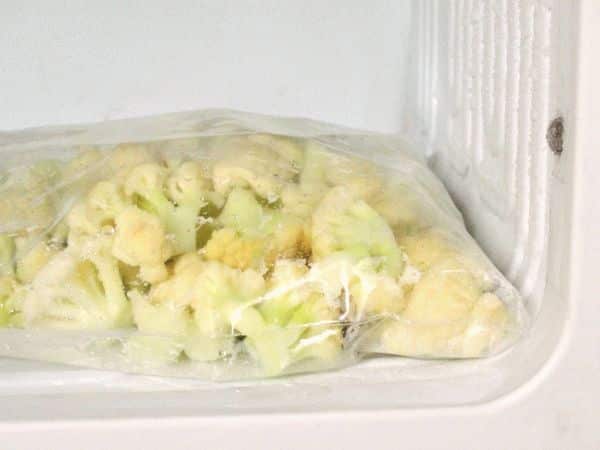Is cauliflower afraid of frost?
Cauliflower is no less popular among housewives than white cabbage. Often the first one is preferred due to its high content of proteins, vitamins C, group B and minerals. In order to harvest on time, it is important to know whether cauliflower is afraid of autumn frosts and what temperatures it can withstand.
Is cauliflower afraid of frost?
Compared to white cabbage, cauliflower is less resistant to low temperatures. It can only withstand light frosts (-2...-4°C). When the average daily temperature in autumn reaches +8°C, the formation of heads slows down, but this does not affect their quality in any way. Despite the colder weather, new small shoots are appearing on the cabbage, which will have to be gotten rid of.

Reference. The most comfortable temperature for vegetable development is +15...+18°C during the day and +10...+12°C at night.
If white cabbage becomes juicy during the first frost, then cauliflower quickly loses its presentation. If frosts are expected, it is better to cover the plants with spunbond and don't hesitate to clean up inflorescences. Transfer the vegetables to the greenhouse, but on the condition that the temperature inside does not drop below +10°C.
To determine whether cabbage is ripe or not, look at its appearance. In ripe specimens, the color depends on the variety (from light cream to purple), the inflorescences are prominent and dense. A ripe vegetable should not be soft and loose.
At what temperature to harvest?

The harvest is planned for dry and cloudless weather. It is better to cut the heads at +15…+20°C.The minimum permissible temperature at which cabbage is still left in the beds is +8°C.
Cleaning begins at noon, since condensation appears on the foliage in the morning and evening. You should not cut cabbage during heavy rains or immediately after a rainstorm: it will be watery, quickly lose its taste and become unsuitable for long-term storage.
How to harvest cauliflower:
- Grab 5-6 leaves.
- Make a cut on the stem 3–5 cm below the head.
- Shorten the tops of the foliage to the level of the inflorescences.
- Transfer vegetables to a cool, dark place.
It is better to store the harvest on racks or in wide boxes. You cannot leave the plant in the sun, otherwise it will wither within a couple of hours.
Important! Vegetables that are not harvested on time turn yellow, swell and begin to “bloom.” Their taste deteriorates and the amount of nutrients decreases. High-quality cabbage is hidden from sunlight by leaves for some time before ripening.
Harvesting time depends on the variety and landing time.
- The harvest of early plants (White Cloud F1, Early Gribovskaya, etc.) is harvested from the garden in mid-June.
- Mid-season varieties (Yarik F1, Amethyst F1) ripen later - by mid-July, in 100–135 days.
- In autumn, late cauliflower (Skywalker F1, Incline F1) is harvested, which grows for a little more than 5 months.
Before picking the heads, check the condition of each: the average diameter of the vegetables is 8–13 cm, the weight of the inflorescences is from 300 g to 1.5 kg.
At what temperature does cauliflower grow in autumn?

Adult, mature plants can easily tolerate a short-term drop in temperature to -1...-2°C. Late varieties are able to grow in cold temperatures down to -4...-5°C, but prolonged frosts harm vegetables.
Advice! If you find out about the impending cold weather, take care in advance to remove cauliflower from the garden. Place it for storage in a dark and cool place (for example, in a cellar) or send it for growing.
In some cases, the harvest is harvested not only in late autumn, but also in early winter. For this, seedlings grow in the middle of summer. It's better not to plant it in open ground, and in containers, wooden boxes or plastic bags. In the summer, containers with seedlings are dug into the ground and cared for as usual, not forgetting to water and feed with organic mixtures.
When frost sets in, the cabbage intended for growing is moved indoors. Thanks to the containers, the roots will not grow in depth and width, and will not be damaged when moved indoors.
It is better to plan the movement of bags or boxes at the end of October - beginning of November. Plants are placed in the cellar, on the veranda or glassed-in loggia. If there are no utility rooms, containers are placed in the room. The temperature should be kept at +10…+12°C.
By adjusting the temperature, you can control the speed of cabbage ripening. So, at +10…+12°C the inflorescences will be fully formed in 20–25 days. If the thermometer drops to +7°C, the ripening period will extend to 35–40 days. If fresh vegetables are needed no earlier than 100 days later, it is better to grow them at +2°C.
The cut heads do not have to be used immediately. Assembled in the refrigerator the harvest is stored within 1.5 months. To prevent the plants from wilting ahead of time, they are wrapped in cling film or placed in a plastic bag. In the freezer, cabbage does not lose its benefits and taste all winter.

Conclusion
To obtain a tasty and healthy harvest of cauliflower, it is important to ensure that it does not overripe. To do this, they look at the ripening period of the variety, the color and structure of the inflorescences. If frosts are expected, it is better to harvest the crop in advance or move the vegetables indoors for growing.